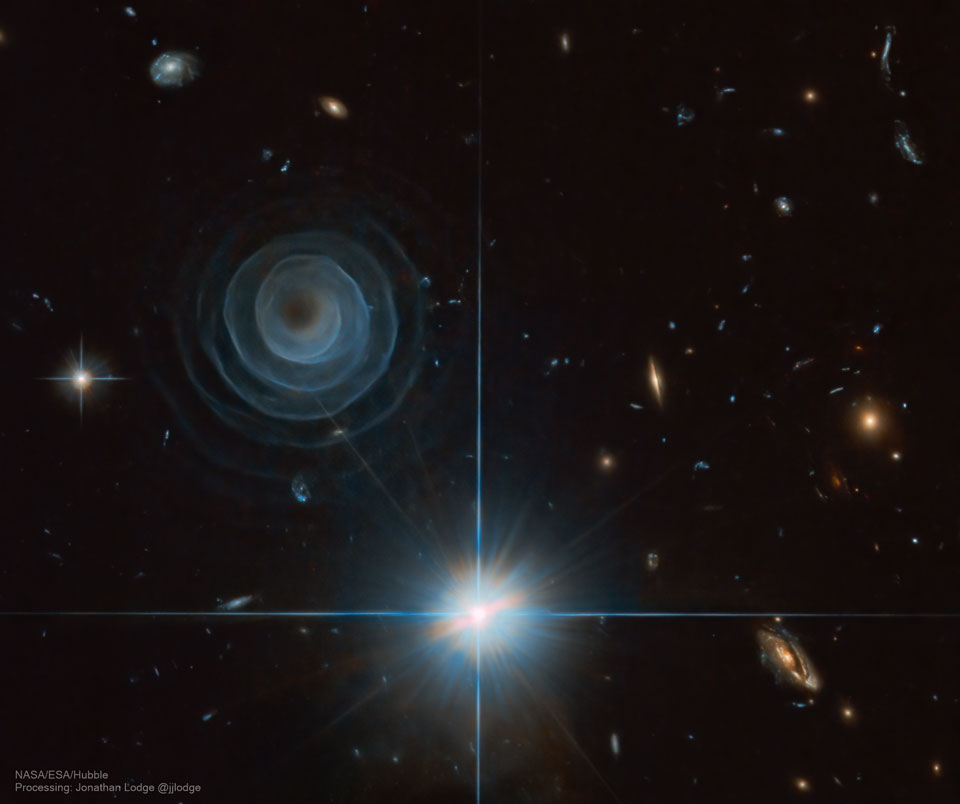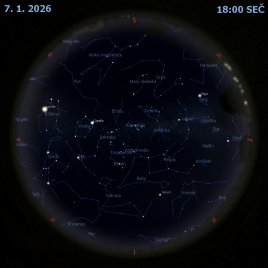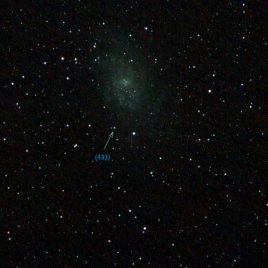Výjmečná spirála v LL Pegasi

Uznání: NASA, ESA, Hubble, HLA; Processing & Copyright: Jonathan Lodge
Co vytvořilo podivnou spirálovitou strukturu vlevo nahoře? Nikdo si není jistý, ale pravděpodobně to nějak souvisí s hvězdou v dvojhvězdném systému, která vstoupila do fáze planetární mlhoviny, kdy byla odvržena její vnější atmosféra. Obrovská spirála měří asi třetinu světelného roku, vine se ve 4 nebo 5 úplných otáčkách a má pravidelnost, která nemá obdoby. Vzhledem k rychlosti rozpínání plynu ve spirále se musí nová vrstva objevit přibližně každých 800 let, což se blíží době, za kterou obě hvězdy oběhnou kolem sebe. Hvězdný systém, který ji vytvořil, je nejčastěji známý jako LL Pegasi, ale také AFGL 3068 a IRAS 23166+1655. Snímek pořídil Hubblův kosmický dalekohled v blízkém infračerveném světle. Proč ta spirála září je samo o sobě záhadou, přičemž podle hlavní hypotézy svítí odraženým světlem okolních hvězd.
Seznam odkazů v popisu
- APOD: 1997-02-19 Mizar Binary Star
- Wikipedia: Planetary_nebula
- APOD: 2021-01-24 Blízká hmotná spirální galaxie NGC 2841
- Harvard.edu: Chandra: Note on Cosmic Distances
- ESO.org: Celestial spiral with a twist
- Wikipedia: Spiral
- ESO.org: 3D view of LL Pegasi
- Wikipedia: LL_Pegasi
- HubbleSite.org: HUBBLE'S JOURNEY AND THE TECHNOLOGY THAT MAKES IT POSSIBLE
- NASA: Infrared Waves
- FlyingPudding.com: Fermat's spiral
- InterMountainPet.com: Foto: Tři psi s hlavami nabok :-)
NASA Official: Phillip Newman Specific rights apply. NASA Web Privacy Policy and Important Notices
A service of: ASD at NASA / GSFC & Michigan Tech. U.
Odkaz na originální APOD


